Army Korean War and Vietnam War Flight date: 08/28/24
By David Adams, Honor Flight Chicago Veteran Interview Volunteer
Imagine a family of eleven children reared on the near west side of Chicago which sent all the men, brothers and brothers-in-law alike, into service of our country. This is the Latham family legacy. Its eight boys and three girls grew up in a “somewhat crowded” home in the St. Charles Borromeo Parish.
World War II found a brother in the Army as a medic with General McArthur’s forces during his return to the Philippines and two brothers in the Navy; two brothers-in-law in the Army, one a medic and the other with Patton’s Operation Husky invasion of Sicily followed by advances up the boot of Italy, and the third in the Navy. The Korean War found a brother in combat in 1951 and another brother in the post-war USAF. All have since passed. Perhaps setting an example, the Latham’s paternal grandfather served in the Union Army during the Civil War.
Brothers Ray, Don, and Tom are joining Honor Flight Chicago flight 117 on August 28.
Our Family’s Legacy
You give but little when
you give of your possessions.
It is when you give of yourself
you truly give.
These are the believers in life
and their coffer is never empty.
These are the ones that
leave a legacy of love and honor.
From the hands of such as these,
God speaks and from behind their eyes
He smiles upon the earth.
Adapted from The Prophet
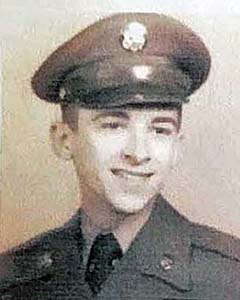
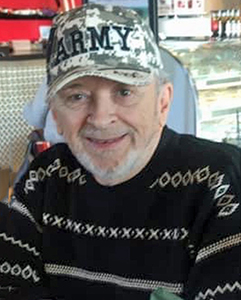
Matthew Raymond Latham, Age 93
Matthew was born on August 17, 1931, at home where all his brothers and sisters were born. He goes by “Ray” since his mother gave most of the children middle names by which they would be known. Ray attended high school at St. Pats for a year and later Harrison Tech. In time he earned a GED. He was drafted into the Army in February 1952.
He completed basic training at Fort Riley, KS with the 10th Mountain Division in July. Next, he reported to Fort Hood, TX and the 1st Armored Division, Company E 85th Infantry for advanced infantry training. His only regret was that “I didn’t get to ride in the half-track which were being phased out.” Instead, the replacement vehicle was the APC on which he participated in testing. He trained on the 30-caliber machine gun. One serious incident got his attention. Ray recalls that the APC driver had just exited the vehicle before a soldier with a machine gun fired a round into the seat where the driver had just left. He was unaware that a single round was still in the weapon. Obviously, weapon clearing procedures were immediately changed to prevent such an event in the future.
With his training completed he shipped out to Germany in December 1952. He joined the 13th Division, 102nd Infantry Regiment as a replacement. He was housed at the Sheridan Kaserne in Augsburg. Augsburg, in Bavaria, is about 31 miles northwest of Munich. He remembers that the countryside was beautiful, except for “the bombed-out buildings”. The Kaserne itself had not been damaged in a meaningful way during the war. He joined a weapons platoon which employed the 60 mm mortar and 30 caliber machine gun. What did he do all day you may ask: “training, training, training.” Readiness involved frequent special alerts requiring everyone to return to the Kaserne then disperse into the field.
During his one-year tour Ray requested leave but twice. Instead of getting leave, he regrettably, he admits, was sent off to Army schools for leadership and advanced infantry training. Both schools were in Bad Tolz, a spa town located at the base of the Alps south of Munich. Maybe not too “bad” after all.
He had limited interaction with the US Army Constabulary which he describes as essentially a military police force set up in 1945 for the occupation. It was just drawing down as he arrived. Constabulary forces withdrew completely on May 5, 1954, after exactly ten years in Germany.
Regarding his Army service in immediate post-war Germany he says, “I loved it, it was new to me. I was never out of the country before.” The food was “tasty and inexpensive”. He especially liked wiener schnitzel and any of the many German beers. Payment was in military script and, later during his tour, in German Marks.
He out processed at Fort Sheridan in January 1954. He went into the Army weighing 113 pounds and was 119 pounds when discharged. Ray was honorably discharged as PFC with these decorations: Army of Occupation Medal (Germany), and National Defense Service Medal.
Returning home to Chicago Ray took a job with Hotpoint which corporation was later acquired by General Electric. He retired in 1990 after 37 years, culminating his employment as a group leader who oversaw inspectors.
Ray met his wife Emily at a family wedding when they stood up for the couple being married. Married 63 years their family includes three children, eight grandchildren and 15 great grandchildren with one on the way. Travel has been a large part of the retirement years. They always set out with family members in varying numbers. Among the destinations were Italy, Greece, Germany, Spain, Turkey, and Hawaii. A trip to China included visits to the Great Wall and the Terracotta Army, near Xi’an, which they considered the most impressive of all.
According to brother Tom, Ray started the family tradition of a fish fry on Good Friday. Ray, in addition to fish fries, remembers large Latham family Christmas celebrations. Rather than being hosted at family homes, eventually a hall was hired, and attendance rose to between 120-140.
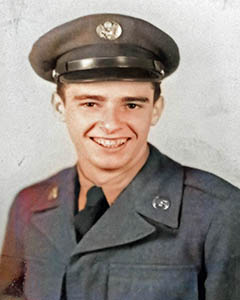
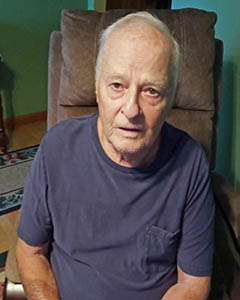
Donald Latham, Age 91
Don, born on March 18, 1933, grew up with his large family in its single-family Chicago home. He graduated from Crane Tech High School in 1951. Upon graduation he went to work at Sears Roebuck filling catalog orders until his Army draft notice arrived. He was inducted on April 17, 1953, at Fort Sheridan.
Don took the train from Fort Sheridan to Fort Riley, KS for 16 weeks of infantry training. He was surprised to find that he was assigned to the same company as big brother Ray who had attended basic there not too long before. He recalls that Sgt. Krum remembered Ray. During the 12th week of training, he was asked to select three others and form a team. They stayed together in Korea where his entire class went.
In late September 1953 he embarked on troop ship USS General N. M. Walker. Enroute the ship stopped in Sasebo, Japan for three days. When he and his team arrived in camp in Japan, the commanding general greeted them as they were among the first to walk in the gate. He felt honored. After that brief stay the unit sailed on to Pusan. The journey ended after a train ride to Kimpo.
Don was assigned to the 3rd Division/7th Infantry Regiment (the “Cottonbalers”) until December 1954. Then he was transferred to the 7th Division/17th Regiment until transport back to the States. In all he served a 16-month tour which included 14 months on the MLR (Main Line of Resistance). No leave time was granted.
He and company were billeted in “squat tents” housing 10 soldiers including the sergeant-in-charge. They were heated by two pot belly stoves. Don remembers the winter was “terrible, cold”. In summer the tent sides rolled up for air circulation. Regarding the food, he recalls that there was no fresh milk, just powdered. Familiar to soldiers was SOS served in the dining hall, open 24/7, alongside other more ordinary fare. No one went hungry.
Everyone had to pull guard duty. Don is reminded that Korea is known as “The Land of the Morning Calm”. When on guard duty from 0400 to 0800 he was essentially “standing in fog”. He needed to challenge even the guys headed to the latrine since visibility was nearly zero.
When his unit rotated to the MLR they “hunkered down in bunkers”. Their unit deployed near the Cheorwon Valley next to the border with North Korea. There he manned the Browning “Ma Deuce” 50 caliber machine gun. They also worked with a tank battalion in that forward position.
Eight KATUSA (Korean Augmentation to the United States Army) were assigned to his company. These Korean-speaking soldiers served as interpreters between the local populace and the Army and helped the Army maneuver in unfamiliar terrain. His company also liaised with the Belgian army, or BUNC (Belgian United Nations Contingent. He recalls these were the Belgian and Luxembourger soldiers who volunteered to fight in Korea. The Belgians had the best PX, according to Don. English troops had NAAFI (Navy, Army, and Air Force Institutes) providing shops, canteens, and the like. Don favored both over the Army PX.
Don reveals that during the French battle at Diên Biên Phú in Vietnam his unit was put on alert to relieve/reinforce the French in combat. The battle raged from March 13 to May 7, 1954. The Viet Minh won thus ending the First Indochina War. Don’s unit did not deploy to Vietnam, and no United States forces were overtly involved.
He remembers vividly the temperature was 21 degrees below zero the day he left Korea in February on troop ship USS General N. M. Walker the same one he took to Korea. He received an honorable discharge on February 7, 1955 at Fort Sheridan as a Sergeant – E-5. Don earned the National Defense Service Medal, United Nations Service Medal, and Korean Service Ribbon. Regarding his service he says, “I hated every day I was in the service but loved it!” A somewhat unique military love-hate relationship.
Out of the Army he went to work for Binks Manufacturing, prominent maker of industrial spray-painting equipment, retiring in 1996 as a foreman-machinist.
Don and wife Jennie will have been married 69 years in February 2025. They first met in St. Charles Borromeo grammar school, she in 6th grade and Don in 8th. They have had five children, four boys and a girl. Their daughter Donna Latham is a well-regarded author and playwright.
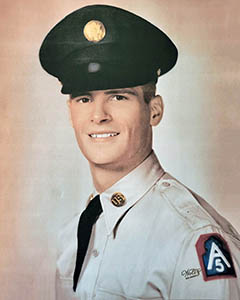
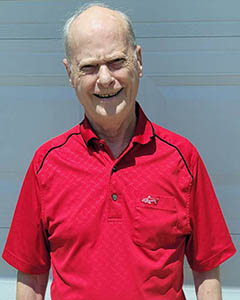
Thomas L. Latham, Age 88
Tom was born on December 6, 1935, at home where he emphasizes that “it was crowded”. Bunk beds abounded in their three-bedroom home. “My brother John had married in 1941 and left home”. He recalls that during WWII some of his brothers were “at war” so there was somewhat more elbow room.
Tom recalls that their paternal grandfather was a Civil War Veteran. He lied about his age, 14 but claimed 19 to join the Army. He was at first a drummer during his 14 years of military service. One of his drumsticks was a souvenir handed down to the grandkids. Tom says it was ultimately broken by “Donnie”. He was practicing his best Gene Krupa riffs on the kitchen water tank when the stick broke. Their dad was none too happy!
He attended high school at St. Philip graduating in 1953. He went to work for Binks Manufacturing just as his brother Don. Six years later in April 1959 Tom was drafted.
He saw active duty for 6 months until October. His basic training occurred at Ft. Leonard Wood, MO. “I never left the boundary of the Fort in my six months of training.” He recalls his company commander enforcing the policy of “no walking in the streets, run everywhere”. The remainder of his Army obligation would be in the active Reserves.
Back to work for Binks.
Sure enough he was recalled in October 1961 after the Berlin Wall was erected earlier in that fall. Accordingly, Tom reported to Fort Riley, KS where he would serve until August 1962. He had more freedom there than at Fort Leonard Wood. Married by then, his wife visited from time-to-time. He eventually drove his car to the Fort from Chicago to have ready transportation. But the frequent long drives back and forth became a bit too much. The train proved the better option.
At Fort Riley he served in the 205th Ordinance Company comprised of 200 soldiers. With his MOS of 763.10, ordinance supply specialist, he confesses he was just a “gofer” for a year. Nevertheless, he fulfilled an essential place in the Army of which he is justly proud. He received a Certificate of Training Rating of Superior in Parts Supply M05770, a Certificate of Proficiency, Honor Graduate of Parts Supply School Class 134, and a 15th Battalion Specialist Training Regiment. “I actually enjoyed my military service and made a lot of friends.” Honorably discharged in August 1962 he earned the following: National Defense Service Medal and Sharpshooter (Carbine M-1).
He returned to Binks Manufacturing Co. for the third time where he would work a total of 43 years. Tom notes that the company was acquired by Illinois Tool Works during his tenure at “Binks”. Retired in 2003 as a materials manager supervising production and materials.
Tom married in 1957 and had celebrated 53 years marriage until his wife’s passing in 2010. They had three sons and four grandchildren.
In retirement he split his time between his Illinois home and that of a good friend in Sarasota, FL. He belonged to a golf club there and played frequently. Until just recently, back in Chicago permanently he would get together with one or more military friends for lunch.
This close family of veterans truly deserve their day of Honor in Washington, D.C. Enjoy every minute!


